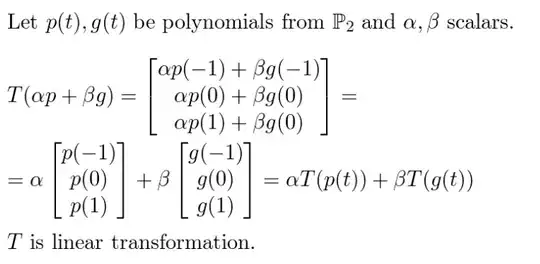Why did the solution to the first question only have one scalar, and the solution to the second had two scalars? Is it up to the solver's preference?
Question 1:
Define $T : \mathbb{P}_3 \to \mathbb{R}^4$ by $$T(p) = \begin{bmatrix} p(-3) \\ p(-1) \\ p(1) \\ p(3) \end{bmatrix}$$ Show that $T$ is a linear transformation.
Question 2:
Let $T : \mathbb{P}_2$ -> $\mathbb{P}_4$ be the transformation that maps a polynomial $p(t)$ into the polynomial $p(t) + t^2 p(t)$. Show that $T$ is a linear transformation.

